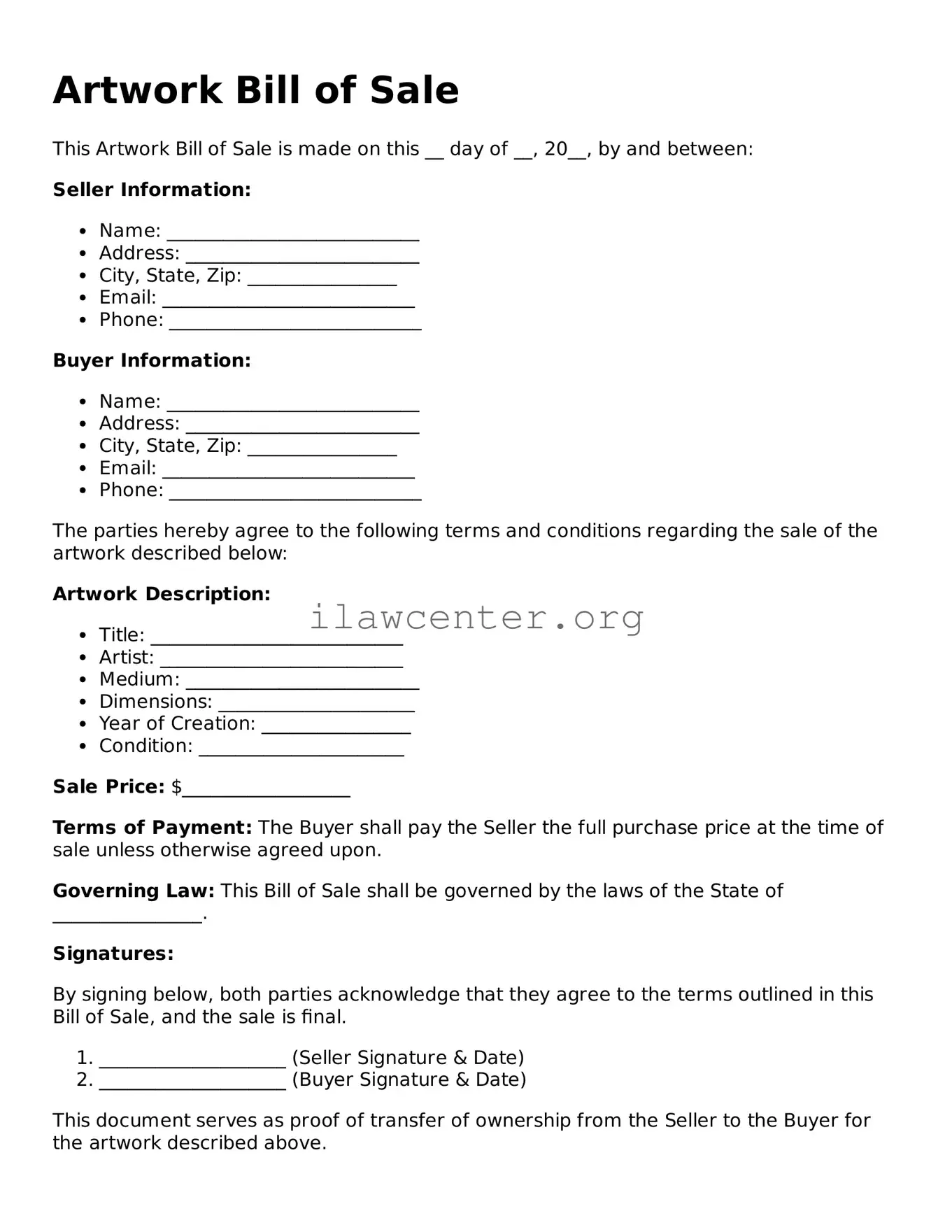Instructions on Utilizing Artwork Bill of Sale
Once you have gathered all the necessary details about your artwork, it's time to fill out the Artwork Bill of Sale form. Make sure to have the required information at hand, as this form serves as a crucial record of the sale. Follow the steps below to complete it accurately.
- Contact Information: Begin by entering your name and contact details in the seller's section. This typically includes your address, phone number, and email.
- Buyer Information: In the next section, fill in the buyer's name and contact information. Ensure accuracy, as this information must be valid for future reference.
- Description of Artwork: Provide a detailed description of the artwork. Include the title, artist's name, dimensions, medium, and any other relevant details that define the piece.
- Sale Price: Clearly state the price at which the artwork is being sold. Be sure to specify the currency to avoid any confusion.
- Date of Sale: Enter the date on which the sale will take place. This is important for records and helps to establish the timeline of ownership.
- Signature: Both the seller and the buyer need to sign the document. This signifies agreement to the sale and acknowledgment of the described artwork.
- Witness (if applicable): If required, include a witness signature and their contact information. It's good practice to have an impartial third party present.
After completing the form, both parties should keep a copy for their records. This ensures that there is a clear and mutual understanding regarding the transaction. Store these copies in a safe place, as they may be needed in the future for proof of ownership or for resale purposes.
